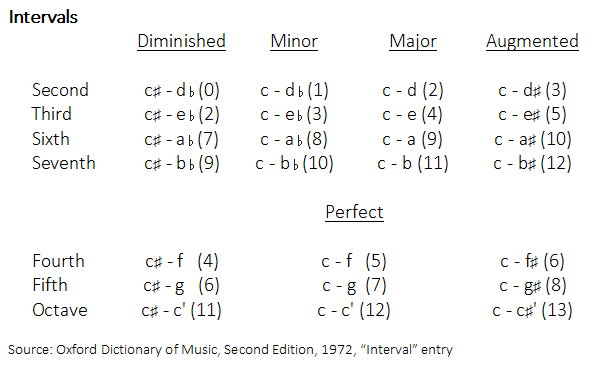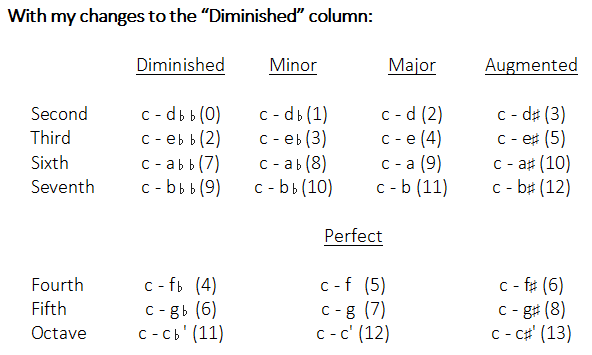I found the following table of Intervals in the OxfordHarvard Dictionary of Music (re-created by me in MS Word):
(Correction to the above: It is "Harvard Dictionary", not "Oxford Dictionary". Oops!)
I am wondering why they use the base note of "c" for all the columns, except for the "Diminished" column. Is it simply to avoid the double-flat? I'd rather see the same base note for all columns. But my level of music theory knowledge is not very high, and sometimes things that initially make sense to me turn out to be wrong. Is there anything "wrong" with the following modification to the chart?
Would someone with a great deal of music theory knowledge find the original Oxford one "better" for some reason?




